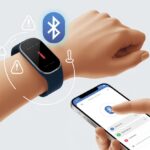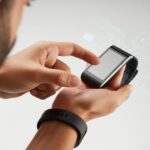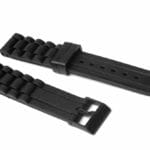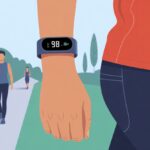We’ve all been there—staring at our fitness tracker, mashing the button, and wondering if it’s just decided to become a very expensive bracelet. Sometimes, it’s just not responding, no matter how convincing our thumb presses seem.
Most of the time, a fitness tracker ignores button presses because of a frozen system, a stuck button, or battery issues.
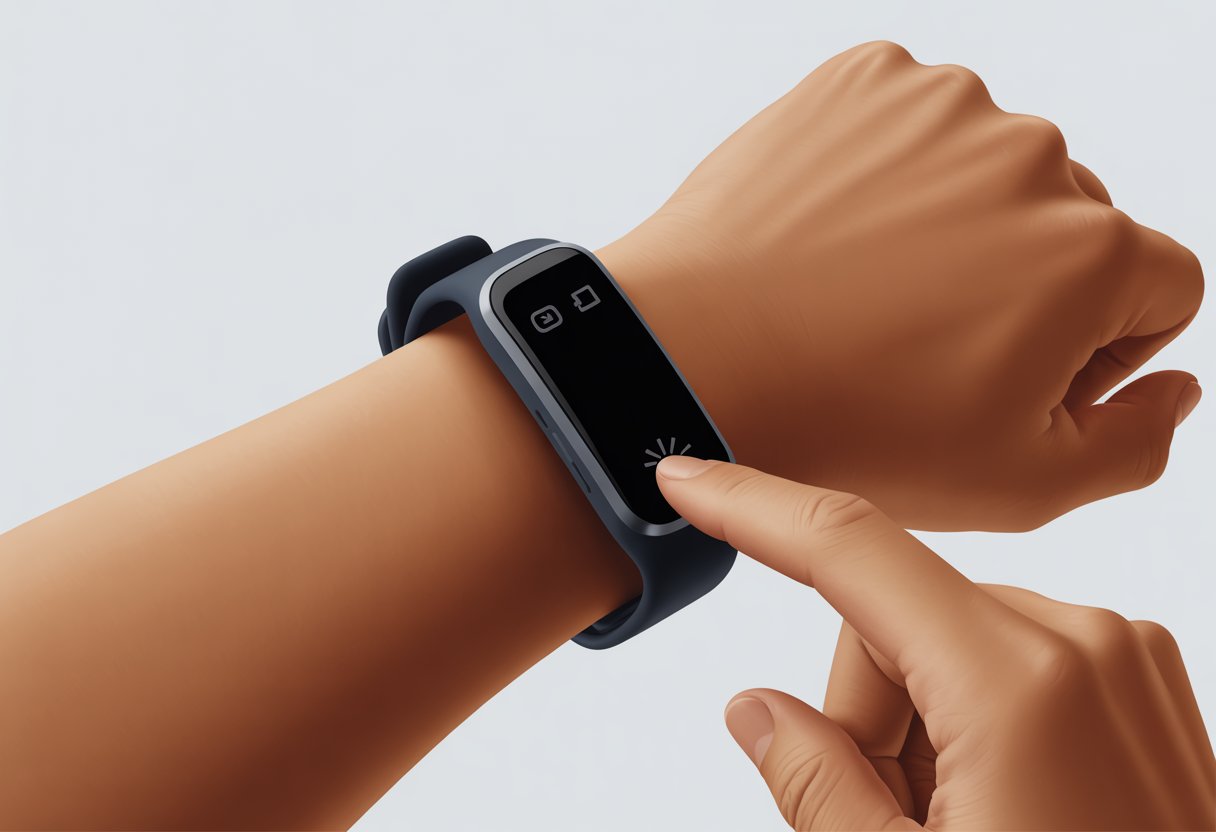
Maybe our pre-workout snack left our fingers a little too sticky. Or maybe the watch just needs a break—a little vacation, also known as a reboot.
Some fitness trackers come back by holding down the button for a few seconds. Others need more creativity to spring back to life.
If you want more troubleshooting tips, even rinsing around the button can help if there’s gunk jammed in there, as Garmin suggests.
Don’t panic yet—most tracker problems don’t require a degree in rocket science.
Let’s take a look at why our trusty gadgets sometimes ghost us and what we can do to win back their attention.
Common Reasons Fitness Tracker Buttons Stop Responding
Sometimes, our fitness tracker buttons just stop working and leave us pressing and hoping for a miracle.
The causes usually fall into a few groups—gunk, power problems, or things getting way too wet.
Sticky Buttons and Debris
Let’s be honest, we all sweat, snack, or run through a dust storm now and then.
Crumbs, lint, or even dried sweat love to hide out under our tracker buttons. This buildup can make the button stick or stop working, kind of like when your remote’s volume button decides to retire.
Common signs:
- Button feels sticky or stuck
- Pressing gives no click or feedback
- It works only if we press really hard
A quick fix: Gently clean around the button with a toothpick or a soft-bristled brush.
Sometimes just blowing air to remove debris actually helps. Keeping the tracker clean can help it stay responsive and happy.
Battery and Low Power Mode
Fitness trackers are needy when it comes to power.
When the battery drops too low, the tracker may go into low power mode or just turn off non-essential functions, like the button.
Sometimes, it might even refuse to turn on at all, pretending to be asleep until we charge it up.
We might notice:
- The tracker doesn’t light up or vibrate
- Buttons stop responding completely
- The screen flashes a low battery symbol
Keeping the tracker charged helps avoid these hiccups.
If it won’t respond, plug it in and wait a few minutes before pressing buttons. If our little wrist computer springs back to life, we’ll know the battery was the culprit.
Accidental Water Damage
Despite the fancy claims, not every tracker handles a dip in the pool like a champ.
Water can sneak inside and mess with the hardware, especially if we press buttons while the device is wet.
This often leads to non-responsive buttons or even a watch that completely checks out.
Warning signs:
- Buttons stop working right after exposure to water
- The screen flickers or goes blank
- Device refuses to turn on or respond
If our tracker gets wet, it’s best to dry it out and not use it until we’re sure it’s moisture-free.
This is one time when patience actually protects our precious step count.
Troubleshooting Fitness Tracker Button Issues
Let’s face it, sometimes our fitness trackers join the dark side and refuse to obey any button we press.
Before we panic and start planning a tracker funeral, let’s check out a few proven ways to bring those stubborn buttons back to life.
Restart Your Fitness Tracker
First things first, let’s try the tech world’s oldest trick—restart!
If our tracker ignores us like a teenager at a family party, a reboot is often all it takes to get its attention.
For many devices, we hold the button down for about 8 seconds and wait for it to vibrate or show a happy icon.
If we see a smiley face, that’s a good sign—it means the restart worked and the system errors may be gone.
Some brands need a special combo, like plugging it into a charger while holding the button.
For details, check the manual or look up steps for your model. Here’s a quick link for restarting solutions that work on a Fitbit.
If the tracker doesn’t respond, don’t worry.
We still have a few tricks up our sleeves.
Factory Reset: The Last Resort
When the tracker is still frozen and we’re ready to scream, a factory reset might help.
This wipes everything, so we lose our settings, but sometimes that’s exactly what a troublemaker needs.
Before taking this step, back up any data we want to keep.
On most brands, we need to navigate through the device menu. If the buttons are completely out of order, we might need to connect it to a computer or use a mobile app.
If all else fails, some trackers support a hard reset using a pinhole or a combination of buttons.
For example, with certain brands, we perform a factory reset via a program like FlowSync if the button situation is out of hand.
More tips are available for Polar devices.
We should only use this option when nothing else has worked; it’s the nuclear option of fitness tracker troubleshooting.
Update and Reinstall Firmware
Sometimes even trackers need a little software makeover.
Old firmware can cause buttons to ignore us or freeze our device when we need it most.
Check if there are any updates for your tracker using the brand’s app or website.
Many brands offer prompts for firmware updates or fixes for common bugs right on the home screen.
If the update fails, try uninstalling and reinstalling the firmware as an extra measure.
Here’s an idea: Make it a habit to check for updates every few months.
To keep our button-pressing adventures drama-free, up-to-date firmware is our best insurance.
If new updates roll out, they often squash annoying system errors before we even notice them.
So, when in doubt, give that firmware package some love and attention.
Both our tracker and our sanity will thank us.
Compatibility With Devices and Operating Systems
Not every fitness tracker wants to play nice with every phone.
Sometimes our gadgets just decide they’d rather take a nap than listen to our button presses.
iPhone Pairing Problems
We’ve all felt the panic when our fitness tracker gives us the silent treatment on our iPhones.
If we’re using iOS 16 or later, some settings might be hiding in plain sight and causing this issue.
For starters, check if Bluetooth is actually turned on—yes, it sounds obvious, but it’s a classic trap.
Sometimes, our tracker shows as “connected” but still ignores us.
When that happens, unpairing and re-pairing the device can snap things back to action.
Go to Settings > Bluetooth and forget the tracker, then do the pairing process again.
If our tracker is still stubborn, try Settings > Health > Data Access & Devices and make sure our tracker is listed.
Some users notice trouble syncing after updating their iPhone or their tracker’s software.
A quick restart—or a long sigh and a few choice words—sometimes fixes things up.
More details about step-tracking problems are in this Apple community thread.
Apple Watch Button Mysteries
Our Apple Watch is pretty great at counting steps, but sometimes it acts like it’s allergic to its own buttons.
We’re pressing, tapping, and twisting the Digital Crown, but nothing happens—except maybe our blood pressure goes up.
Software updates, especially around iOS 16, can add a few new “features” to how buttons work—or don’t work.
If our Watch is lagging, a simple restart is often all it takes.
If not, check whether AssistiveTouch is turned on, as this feature can interfere with normal button controls.
Dirty or wet hands can make things worse, especially when swiping or tapping.
To make sure everything’s working, clean the Watch and check for screen protectors that could block sensors.
Sometimes, a watch band swap or update can get things moving—no magic spells required.
Connection and Syncing Glitches
Sometimes our fitness trackers just don’t want to listen, and the problem isn’t always the device itself—it could be a syncing or connection issue.
By figuring out how things can go wrong with our apps or Bluetooth, we can save ourselves from unnecessary button-mashing fury.
Syncing With Fitness Apps
When our tracker won’t play nice with a fitness app, things get weird fast.
We hit a button, and nothing happens. The problem might not be our superhuman thumb strength.
Sometimes the app on our phone or computer just refuses to update, connect, or even recognize the tracker.
One quick fix is to delete and reinstall the fitness app.
Yeah, it sounds basic, but it often works wonders.
If logging out and back in doesn’t help, closing all other running apps might do the trick.
Updating both the app and our phone’s operating system is also a smart move.
Old versions can make devices act like they’re living in the past—and not the fun kind.
We should also make sure our tracker is charged and awake.
Sometimes an update gets stuck during syncing, causing the buttons on our device to freeze up.
If things are still stuck, check the company’s site for troubleshooting tips or visit help forums like this post about exercise not syncing.
Bluetooth Communication Breakdowns
Bluetooth is the misunderstood middle child of our tech setup.
Our tracker, phone, and computer all have to talk to each other, and sometimes someone refuses.
A common sign: pressing buttons on the tracker and getting no response because it’s stuck mid-sync.
Turning Bluetooth off and on again is classic advice, but it really is step one.
If we’re still getting nothing, try restarting both our phone and our tracker.
Sometimes, we need to remove the tracker from our phone’s Bluetooth settings and add it back in.
This little “unfriend and re-friend” dance can often jolt things back to life.
If our device is still frozen, a full reinstall of the fitness app may shake loose any hidden cobwebs.
It’s also important to check if any other Bluetooth devices are interfering.
Headphones, speakers, and even our neighbor’s mystery devices can cause interference, creating the perfect storm for a connection meltdown—meaning our poor buttons don’t stand a chance during syncing mishaps.
For devices like some Garmin and Polar watches, syncing issues can even make the device unresponsive until everything is reset, as seen in threads about Bluetooth sync issues and sync troubles.
Sometimes, all we need is a little digital pep talk and a few extra steps.
Fixing Fitness App Not Working
Let’s be honest—if our fitness tracker isn’t tracking, we’re just waving our arms for no reason. Luckily, with a few smart moves, we can get those numbers rolling again and avoid another data disaster.
Unpair and Repair Device Connections
Sometimes, our devices need a little relationship counseling. When our fitness tracker stops responding, unpairing and then repairing with our phone usually brings things back to life.
We should head to our device’s settings and unpair the fitness tracker (or Apple Watch) from our phone. On iPhones, we do this in the Watch app by tapping “Unpair Apple Watch.”
After unpairing, we restart both our phone and the tracker—think of it as a fresh start after a disagreement. Once both devices power back on, we pair them again.
It’s important to make sure Bluetooth is on and both devices are close together. We should also check that location services are enabled, since some apps need them to track our activity correctly.
Many users have found that unpairing and repairing solves weird issues with the fitness app not working. It’s a simple fix, but it works more often than you’d think.
Reinstalling the Fitness App
When nothing else works, we just delete and reinstall. If the fitness app still refuses to cooperate, deleting the app and installing it again can sometimes snap it back into shape.
First, we press and hold the app icon, tap “Remove App,” then head to the App Store and download it again. Before doing this, it’s smart to check if our important data is backed up.
Nobody wants to lose those precious step counts that prove we took the stairs—at least once, right? After reinstalling, we log in and check if things are working as they should.
If reinstalling doesn’t help, we might need to reset our iPhone. It’s a last resort, but sometimes our devices just need a little “nap” to clear out stubborn bugs.
Always back up everything first—no one wants a tragic tale of lost workout points. If you want more troubleshooting tips, check out this guide on what to do if your fitness app is not working.
Advanced Troubleshooting Steps for Persistent Button Problems
Sometimes, our fitness trackers just love to test our patience by ignoring button presses. If a quick rinse or a basic reset doesn’t help, we need to try some heavier solutions.
Let’s see what else we can do before considering drastic measures.
Standard Repair and Professional Help
If pressing the button for 10 seconds or a simple restart doesn’t solve things, our trackers might have bigger issues. Dirt and debris can sneak into tiny crevices, making buttons feel sticky and unresponsive.
We can gently clean around the button using a soft brush and a little alcohol. If our tracker still ignores us, changing the settings or even swapping the clock face (yes, this sometimes works, especially for some Fitbit devices) may help.
If nothing works, it’s time to call in the experts. Contact the manufacturer or visit an authorized repair shop.
Sometimes, admitting defeat and letting the pros handle it is the smartest move. There’s no shame in that.
Using TunesKit iOS System Recovery
If we use trackers that sync with iPhones, there’s another option before we give up: TunesKit iOS System Recovery. This software acts like a spa day for our devices.
TunesKit can fix all sorts of weird glitches between our tracker and iOS, including times when the app won’t recognize button presses. We connect the iPhone to our computer, open the program, and follow the on-screen steps.
This might get the tracker and phone working together again, even if they’ve been grumpy. It’s not a guaranteed fix, but for software-related button problems, this tool is worth a shot—especially if stubborn electronics make us break into a cold sweat.
Optimizing Fitness Tracking Accuracy After Button Issues
If our fitness tracker starts ignoring button presses, it’s not just about missing a workout selfie. We might also lose accuracy in activity tracking, and that can make our hard-earned calories vanish into thin air.
Fixing the button is just the start. Now, let’s get our device’s tracking back on point.
Reset Fitness Calibration Data
Sometimes our tracker forgets how to count our steps or measure our runs. Resetting the fitness calibration data gives it a fresh start.
On most devices, we find this option in the Settings app under Motion & Fitness. Here’s what we do:
- Open the Settings app on our fitness tracker or paired phone.
- Go to Privacy or Motion & Fitness.
- Select Reset Calibration Data.
This wipes any old, confused data. After resetting, we’ll need to move around for a day or two so the device can relearn our movement style.
Yes, the tracker gets a second chance at tracking our power walks and those epic couch-to-fridge sprints.
Enable Fitness Tracking
Sometimes, we simply have fitness tracking turned off and forget about it. After a reset or update, these settings can quietly switch.
It’s like buying a treadmill and leaving it unplugged—then wondering why our step count stays at zero.
Let’s check if fitness tracking is enabled:
- Open the phone’s Settings.
- Tap on Privacy.
- Go to Motion & Fitness.
- Make sure Fitness Tracking is turned on.
If it’s off, our device won’t record steps, runs, or even our victories over the stairs. Flip it back on and let the tracker celebrate every move—even if it’s just waving at the neighbor’s dog.
Check GPS and App Settings
Sometimes, our tracker acts lost because it is—thanks to GPS and app settings. Without proper access to location services, it can’t measure outdoor runs or rides accurately.
Our epic “jog around the block” could end up as “one step in the living room.” Not ideal.
To double-check:
- Open the Settings app.
- Tap Privacy, then Location Services.
- Find our fitness app and make sure it’s set to While Using or Always.
- Open the fitness app and ensure permissions are granted for GPS and motion data.
This way, our tracker knows where we are—even if we’re just in front of the TV. If you need more detailed steps, the Apple community has some helpful tips.
Proper GPS setup helps our device get the route, pace, and bragging rights right.
Privacy Concerns When Troubleshooting Trackers
When our fitness trackers stop responding to button presses, it’s easy to think the only problem is missing step counts. But poking around in our devices can raise some privacy issues if we’re not careful.
Troubleshooting isn’t just about fixing things—it’s also about protecting our sensitive fitness info from unexpected prying eyes.
Data Backups and Handling Sensitive Fitness Information
Whenever we mess around with our trackers, we might back them up, reset them, or hook them up to new software. It’s surprisingly easy to forget that private stuff—like our sleep habits, heart rate, or even our real-time location—could slip out by accident.
Before you upload data anywhere, just double-check where it’s going and who might end up seeing it.
Honestly, it’s worth reading the privacy policies from the companies behind these trackers. Some brands actually share our info with third parties, which feels a bit unsettling.
If you’re posting about troubleshooting on public forums, try not to share screenshots with your personal details showing.
You can dig deeper into staying private with these gadgets and online resources over at fitness tracker privacy risks.
When in doubt, maybe keep your heart rate—and your personal details—between you and your tracker.
- Best Smartwatches for Teenagers: Because Your Wrist Deserves Better Than a Friendship Bracelet - November 9, 2025
- Why is my fitness tracker not displaying correctly in sunlight? How Your Watch Became a Vampire - November 8, 2025
- Why is my fitness tracker not showing Facebook notifications? Your Steps Count, But Your Likes Don’t - November 8, 2025

